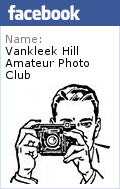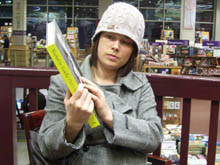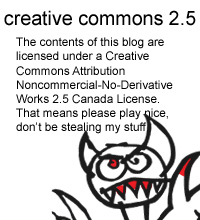![]()
“[A time comes when silence is betrayal] …the truth of these words is beyond doubt, but the mission to which they call us is a most difficult one. Even when pressed by the demands of inner truth, men do not easily assume the task of opposing their government’s policy, especially in time of war. Nor does the human spirit move without great difficulty against all the apathy of conformist thought within one’s own bosom and in the surrounding world… .”
Martin Luther King, April 4, 1967
![]()
“Yo, you know what I want? I want the beat to drop right… now / Niggas be thinkin’ I’m crazy right? / You are crazy… / I ain’t crazy… / You are crazy… / At least I don’t think I’m crazy / I think my shit is hot, I think I’m hot / You hot but you crazy… / Why they wanna? …man… I don’t know…”
50 Cent, excerpted from “The Good Die Young” from “Power Of The Dollar” (2000)
![]()
From the time moving pictures were invented until maybe only a decade or so ago at the max, the only film roles given to blacks, Asians or American Indians were ones of submission or of the noble savage. Either the doorman or the radical. Sam in “Casablanca” or Sydney Poitier as an FBI agent fighting racism in the Deep American South in “In The Heat of The Night”. Blaxploitation Flicks like “Shaft”, “Foxy Brown”, “Black Dracula” were patronizing movies made by parochial minds who saw an untapped market in the black American movie-going community and took advantage of it with pap (re: lesbian characters being tossed into programs like Law & Order Criminal Intent for no other reason than, “hey, lesbians buy shoes as well.”). The only role for someone with brown skin was as “Indian Number Six” in the western of the month. It took ninety years until a black man was allowed to be the lead in a mainstream movie.
All of this, I think, is to make a point about books. Or maybe popular culture. The first “bestselling” novel in America was “Uncle Tom’s Cabin”, a book about slavery where the primary character was a black man. And it was a strong character, a misunderstood character today, but still a very strong character. Then there’s the “Jim” character in “The Adventures of Huckleberry Finn”, an honest to God fleshed out character who participates on almost every page. I’m going to extrapolate from only two sources here because I can’t think of anymore examples (it’s after midnight and I’m hungry), but there are more — a lot more, especially from 19th century American literature. And these were not submissive characters, these were not pro-slavery or segregationist books (although those were being written as well, of course). These were honest accounts of real activities.
Uncle Tom’s Cabin was written by Harriet Beecher Stowe, a white woman, as an anti-slavery tract because of her visit to a plantation and from meeting freed slaves. The book was very close to being a straight ahead manifesto on non-violent resistance. There were a significant number of literate and well-educated blacks in the American Northeast and in Southern and Eastern Canada and there were several black owned Publishing Houses where books were being published by freed slaves as they came north. American literature, published and written by black and white men and women in the late 18th until the late 19th centuries, was crucial to educating the white middle and upper classes on the evils of slavery, and played a key role in starting the American Civil War.
So late 18th and 19th century popular culture, through the written word, plays and music, were being fair to the black population’s misery, and there were even important books being written about the mistreatment and humiliation of the American Indian. So where did it all go when the 20th century opened up?
It’s as if all of the positive advances in American and World culture all went away in a puff of smoke when movies were invented. It’s as if film pushed the civil rights movement backwards, and the black character went from being strong and proud in print, to a doorman and a singing, laughing idiot on cellulose. It’s only been a few decades where a black person could direct a ‘major motion picture’, and only within the past few years could a black man be cast in a traditionally white lead role (Poitier was always cast to be a black man, Denzel Washington’s characters are universal… no black angst in “The Inside Man”). I keep writing “black man” because the time has either just arrived, or has yet to, where the same can be said of black women. Although Halle Barry seems to be breaking that barrier, black women are still the fourth tier in film: 1) White men; 2) White women; 3) Black men; 5) Animals; 6) Gay white men, and so on.
I think all of this is because there were thousands of people who had access to printing presses back in the Anti-Slavery Movement, but only ten with access to a movie studio since then. The same thing (movies and popular culture, pushing a movement backwards) happened in 1945 with the Women’s Rights Movement as well. The initial gains in the early 1900’s, the vote for example, had created a sense that women were easily the equal of men, but then the guys came back from war in 1945 and the movie studios started producing films with Suzy Q. Homemaker and easy, seductive, smoking women who secretly desired to be dominated by Bogart. Women spent forty years fighting back from those movies.
And now we’ve all got access to a printing press again in the Internet, so who leads whom? Does culture drive a movement, such as books did with the American Civil War, and the end of slavery”? Or must the movement force its way through culture, such as the American Civil Rights Movement of the 1950’s-70’s where the popular culture of the day actively opposed the Movement? [Aside: One of Gandhi’s favourite books was Uncle Toms Cabin. You’d think the book would be required reading everywhere, like maybe in the West Bank and Gaza Strip. Next post.] So what happens when there are so many voices (too many?), all of which can now be heard and read? How do you start an honest to god ‘Movement’ when you’ve got a hundred million voices and most of them only want to look at your naked teenage daughter?
Because, at the moment, the cartoonish creations by the music and video industry of “contemporary black culture” is moving the yardsticks backwards as surely as “The Pussycat Dolls” and “Fergie”, with each inane and insulting video, are pushing women back into three-foot wide shoulder pads and glass ceilings. The children being raised by this pap don’t understand the self-honour they lose each time they dress up like a cartoon-hooker and go dance like they’re auditioning for a porn movie, or sculpt their pathetic barely-post pubescent facial hair into tiny lines and walk around mall parking lots pretending they’re “so fucking hardcore” that they’d kill you as easily as flicking some dust off their shoulder.
Just as a point of interest, the only major Social Movement of the 20th century not to use violence, or have violence associated with it, was the Women’s Movement. Lots of marches and bra burnings, but no guns, riots or beatings.
[aside: Even here in Canada, when women got the vote back in the 20’s a lot of the white women leading the charge didn’t want women-of-colour to have the same right. Natives couldn’t vote here until the 60’s. Until the mid 60’s if you were a Francophone living in Quebec you earned 3% of what an Anglo took home…]
.

.












 0_o
0_o





















And … ? You started … so you can finish. What was your point? That internet users should start a ‘movement’ to what end? Political? And do what? To stop young girls emulating the ‘Pussycrap Dolls’ and boys, gangsters? Because believe it or not, the ‘gangsta’ culture isn’t black anymore, it’s gone all the colours of the rainbow! And young girls are wearing bras at the tender ages of nine years old, when the only thing they have to put in it is a pair of nipples.
I don’t think women, these days, would be quite so non-violent as their historical counterparts.
Not anymore.
Did you get too hungry to finish your post?
“Did you get too hungry to finish your post?”
Actually… that’s exactly why I stopped. Weird.
“Because believe it or not, the ‘gangsta’ culture isn’t black anymore…”
It never was black, it was white suburban Americans who initially embraced and drove “gangsta culture”. Before White America: Grand Master Flash; After White America: NWA & 2Pac. It’s occasionally amusing to watch how the “Original Gangsta” movement has spread beyond white America to white French-speaking Quebec, to the Middle East and now into Africa where there’s a fast growing urban Rap culture. Gangsta Culture will continue to spread into weird and exciting places because there’s money to be made from it. It’s as cynical a pop culture movement that has ever been created: celebrate the people dealing drugs and creating mayhem in predominately minority neighbourhoods, while placing the blame for that mayhem and drug crime on people from outside those communities, while the only people making money are record execs and the people creating the mayhem and dealing the drugs.
“That internet users should start a ‘movement’ to what end?”
No, that the Internet has returned democratic publishing to the greatest cross-section of people since the print publishing revolution of the 19th century. The consolidation of media over the past two decades is meaningless compared to what happened to popular culture when film, radio and television were unleashed. Reading is democracy. As long as I can write and they can read I can send a letter anywhere to anyone. The Internet has created a means whereby someone, for the price of $2.50CDN/hour at the Internet cafe, can create a global footprint. The problem now, ironically, is that the Internet Culture, despite what you might read in Wired, is centred on Hustler. Democratic publishing has created a Global Economy and Culture that is fed by sexualized nine to eighteen-years old girls. The Internet may actually be proving that too many outlets drowns as many voices and cultures as too few.
“And young girls are wearing bras at the tender ages of nine years old…”
That has more to do with environmental factors. Preschool girls with breasts has the same correlation factors as frogs borne with both sexes, or aboriginal Canadians having birthrates where girls outnumber boys almost three to one in certain heavily polluted areas.
“I don’t think women, these days, would be quite so non-violent as their historical counterparts.”
What I’m suggesting is women managed to accomplish more than any other 20th century civil rights movements without the explosions. Things like the American Women’s Movement, the Martin Luthor King led movement and the Ghandi movement, need to be studied and learned from. But that’s hard, and no one likes difficult. Suicide bombings and planes into buildings are easy.
In the end, though, Westernized people today don’t really want to stress themselves Too Much over issues. Look at the “anti-war demonstrations” or the “anti-globalization” movement. Over the past ten-years, and this (albeit unscientifically) mirrors the growth in Internet use, they’ve become more neutered/spayed, not less.
The major problem with my original post is I strayed away from my original point, which was that it took ninety-years for Black pop-culture to regain the level of sophistication it had in the late 19th and early 20th centuries. And that women have yet to attain any level of onscreen respect. But that, again, was mostly due to hunger.
If only someone was willing to send me some eggs…
Fried, hard-boiled or my personal preference, scrambled?
‘suits you sir!’
I am laughing!
A good post, with only one point. The film’s name was Blacula, and its sequel was Scream, Blacula, Scream.
That’s right… my bad. Weird… I was “random” surfing yesterday and I came across a site where a dude had referenced Slim Pickens and his missile ride in “1945”. I think you left exactly the same, polite, note I left him.
This was one of my first posts and I never really finished it… I think I was getting a little off point towards the end. I’ll fix the Black Dracula thing when my brain stops throbbing.